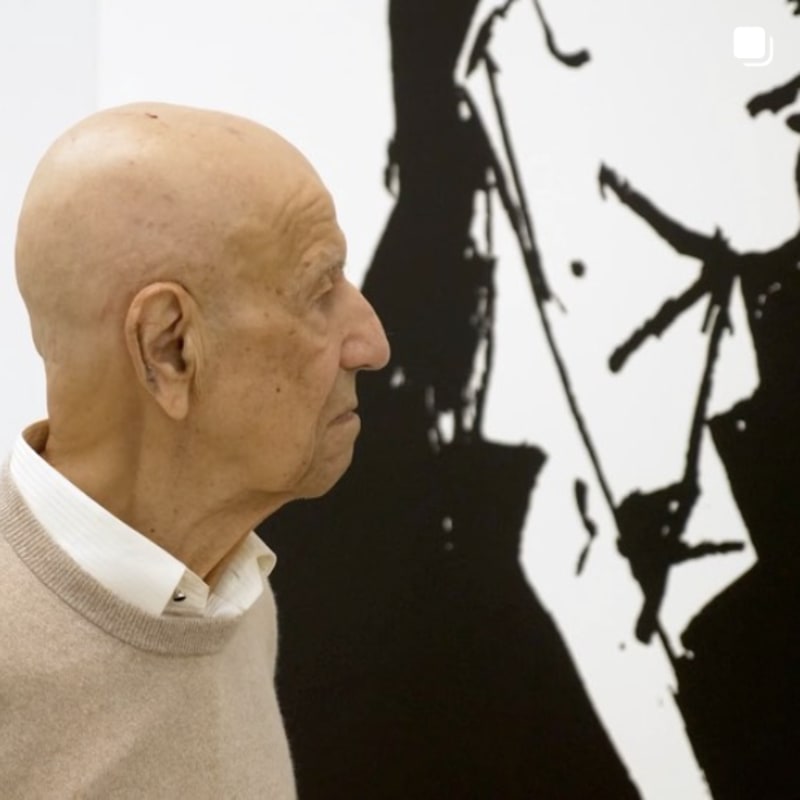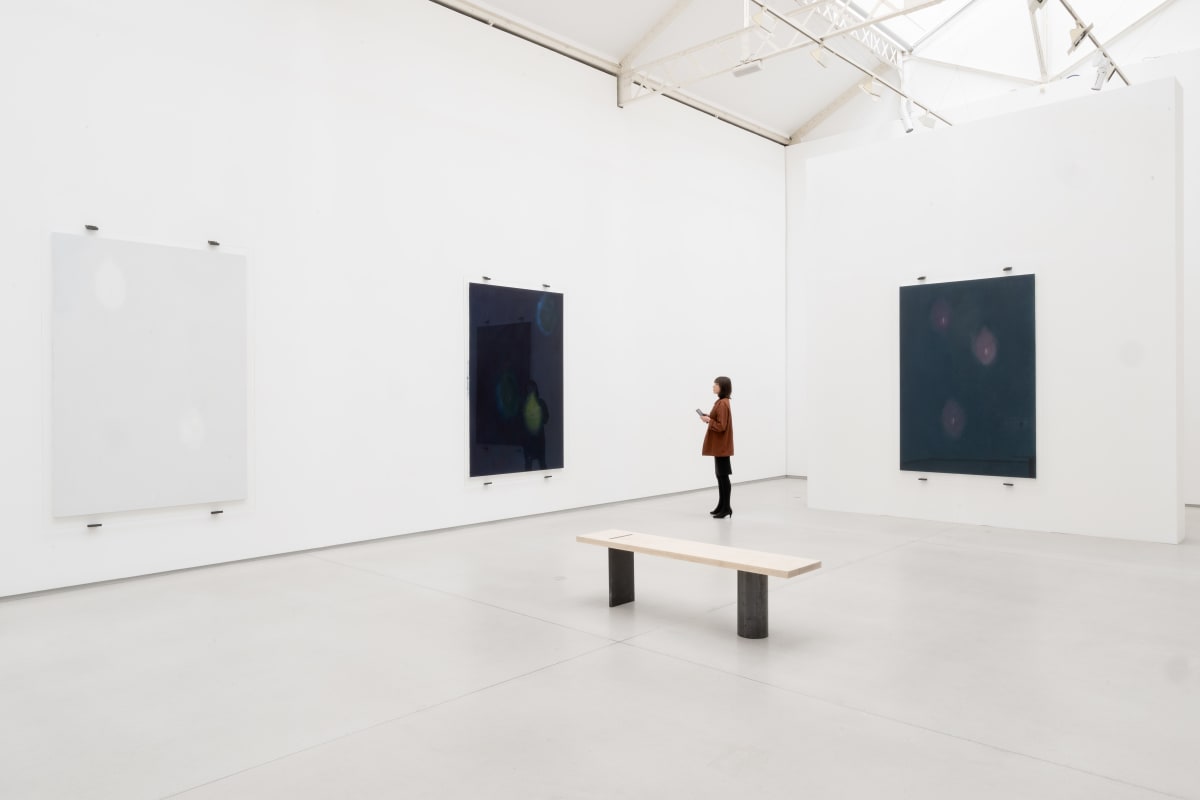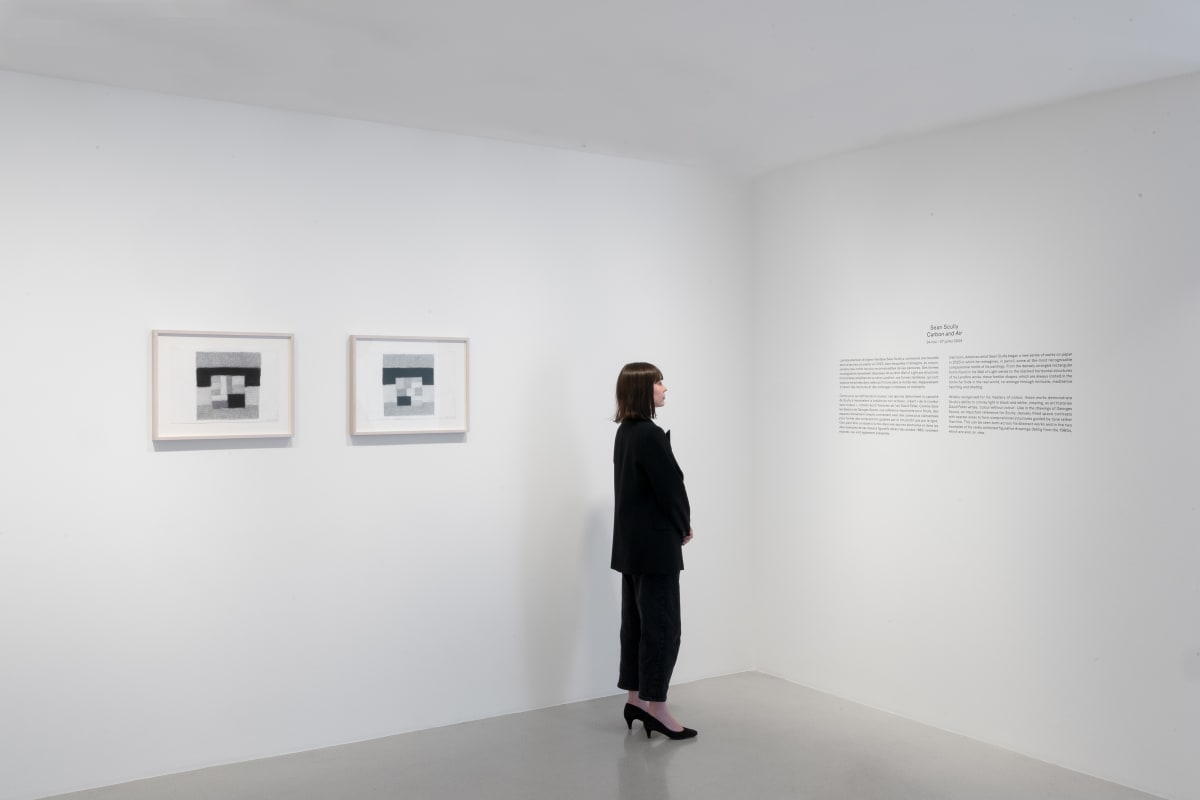

Overview
Affected by the global rise of terrorism since 9/11, Imran Qureshi’s practice reflects on its devastating effect on the world and on his native land in Lahore, Pakistan.
Galerie Thaddaeus Ropac is pleased to announce the exhibition entitled “…and that is how we loved this too - this land...” by Pakistani artist Imran Qureshi. His new body of work explores at once a deeper notion of the beauty of life and the shock of violent death. Affected by the global rise of terrorism since 9/11, Imran Qureshi’s practice reflects on its devastating effect on the world and on his native land in Lahore, Pakistan.
With this new series of paintings Imran Qureshi echoes a specific deadly event that recently went viral on social media. In some of his paintings this is transposed in dragging his body and hands in red paint along the canvas. This gestural approach to painting reduces the distance between the canvas and the artist while the moving bodily imprints also accentuate a notion of time. Only in some parts, where the rawness of the red colour is over-painted with flowers, the slowness and beauty of growth emerges.
Influenced by miniature painting with roots in the Mughal tradition, the sense of violence is overcome by composure. Imran Qureshi’s compositions translate a subtle state of both hope and despair. He says that “...this was such a sad and extremely terrible incident which I saw accidentally in that viral video... and I think this new work is somehow a reaction to that…”.
In the twenty-seven paintings of the exhibition, the artist further experiments with similar shades of colour tones: “I am looking at different contemporary substitution to those traditional techniques. As a miniature student, rigid training on tonal gradation is the first task that needs to be mastered. For example, how the sky ranges in colour tones from day to night and how the greens of the ground alter. This idea compares the changing colours of the sky to the different parts of the world.” To him, all violence all over the world is the same and the loss to human lives alike, no matter in which part of the world an act of terror is taking place. Hence in extending his tones the artist confronts the viewer also with a peaceful experience. Imran Qureshi says: “the flowers that emerge from the paint in my work represent the hope that—despite everything—the people sustain somehow their hope for a better future.”
Imran Qureshi further explores the large-scale format in different shapes and forms, from the rectangular to the oval, to the combination of both. These composites accentuate a sense of a flow with the continuation of the imagery from one canvas to the next, but also a sense of divide due to the canvases’ split. To the artist, the oval shapes are like abstract portraits of different people now present in their absence.
In contrast to the large scale paintings, Imran Qureshi is showing eleven miniature paintings that require the viewer to focus on a carefully framed central image of, for example, a bent tree that at closer inspection reveal stains of blood. Encircled by detailed imagery of birds, flowers and subtly changing colours, the viewer’s eye searches for lovely comforting details whilst at the same time being taken by surprise by an uncomfortable subject matter. As a result the loveliness of the work overshadows the awkwardness of the composition.
A new video will also accompany the exhibition. It is a sequence from Breathing (2014) where gold leaf is captured in slow motion and is flying in the air against a green backdrop. The new work will show a similar making, however, rendered in red paint instead of the gold that accompanies his large-scale action paintings. The video work explores the permeability that borders spaces, while expressing the vulnerability of our social tissue. Imran Qureshi’s art is always a subtle balance between the uneasy and the poetic, with hope and beauty prevailing. The large-scale works overturn the objective of the small scale, and, vice versa, acts like an inversion.
Imran Qureshi has come to international recognition with his installation at the Sharjah Biennial in 2011 Blessing Upon the Land of My Love followed by his rooftop installation at the Metropolitan Museum of Art in New York in 2013. The same year he participated in the 55th Venice Biennale’s The Encyclopedic Palace, curated by Massimiliano Gioni. In 2014, his paintings and a site-specific installation were on view in the inaugural exhibition of the Aga Khan Museum in Toronto titled Garden of Ideas: Contemporary Art from Pakistan in 2014, and The God of Small Things was presented at the Eli and Edyth Broad Art Museum in Michigan. During the winter 2014/15 Ikon Gallery in Birmingham presented a solo exhibition by Imran Qureshi following his exhibition at the Deutsche Guggenheim Berlin, where in 2013 he was awarded the prize of Deutsche Bank Artist of the Year. In 2015, Imran Qureshi was invited to exhibit in the first inaugural exhibition at the Kunsten Museum of Modern Art in Aalborg, Denmark built by the renowned Finnish architect Alvar Aalto. Imran Qureshi’s most ambitious three venue exhibition took place in 2016 in Cornwall, in addition to the most attended commission Where the Shadows are so Deep for The Curve at the Barbican Art Centre, London. In April 2017 the National Art Gallery in Islamabad, Pakistan, is hosting a large-scale survey exhibition of his work.
Imran Qureshi is represented in many collections around the world as well as the permanent collections of major institutions including the British Museum, The Metropolitan Museum of Art, New York, The Art Institute of Chicago and the Victoria & Albert Museum, London.
The title of this exhibition “…and that is how we loved this too - this land...” refers to a quote by Pakistani poet Faiz Ahmed Faiz (1911 – 1984) whose lyrics Imran Qureshi heard on the radio as a child. Their social and cultural connotations often accompany the titles of the artist’s creations.












































































































































































